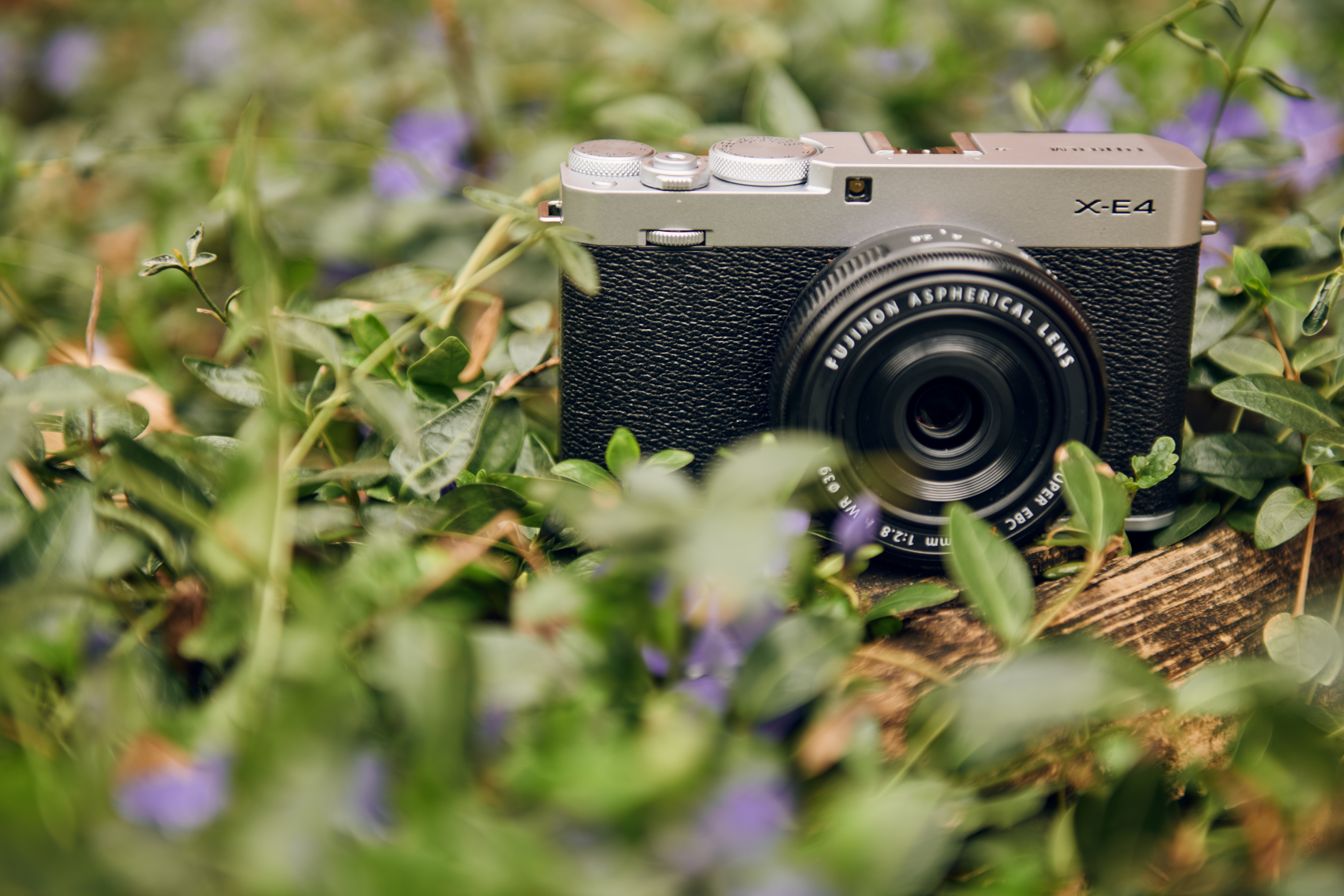The Fujifilm XE4 feels like a point-and-shoot, yet it has the image quality of a camera that costs twice as much.
The smaller a camera is, the more likely photographers will carry it with them everywhere. The Fujifilm XE4 is one of the smallest mirrorless bodies from Fujifilm yet. Paired with a newly announced 27mm kit lens, and the XE4 feels almost like packing a point-and-shoot. At $850 body-only (or $1,050 with the kit), the XE4 is one of the more affordable Fuji mirrorless cameras. Even with that price, the XE4 still packs in the same sensor and processor as the Fujifilm XT4. So, what did Fujifilm cut to get to that sub-$1000 price point?
While image quality will be the same as a camera that costs twice as much, the XE4 lacks in-body stabilization. The camera also isn’t weather-sealed and has fewer controls. But, the XE4 evokes a bit of nostalgia with its rangefinder-style viewfinder, demands to be taken everywhere with its small size, and sits as an affordable entry to mirrorless. I spent two weeks shooting documentary-style photography with the XE4 to see how this $850 camera performs.
Table of Contents
Too Long, Didn’t Read
The Fujifilm XE4 is a good, affordable camera that doesn’t sacrifice image quality. It does omit stabilization and weather-sealing, while tracking autofocus also needs improvement. However, it’s not a bad buy for photographers on a budget — and particularly those yearning for the look and feel of a film camera.
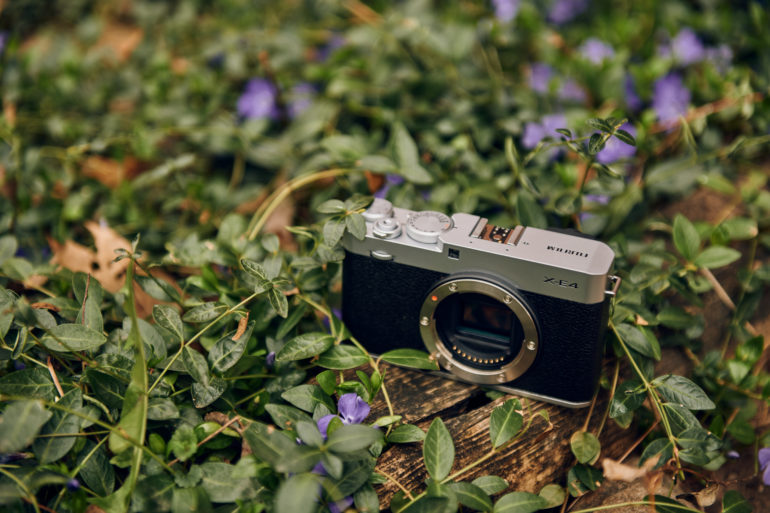
Fujifilm XE4 Pros and Cons
Pros
- The same sensor and processor as the pricier XT4
- Compact design
- Classic look and feel
- Addition of a P mode
Cons
- No in-body stabilization
- No ISO dial
- No weather-sealing
- Autofocus tracking is sub-par
Gear Used
I tested the Fujifilm XE4 with the 27mm f2.8 R WR.
Innovations
The Fujifilm XE4 is a refresh on a budget model: unsurprisingly, it’s not a groundbreaking camera. But, the XE4 is Fujifilm’s smallest and lightest X body, and that’s something.
Fujifilm XE4 Tech Specs
These tech specs are a much-shortened version of what’s available on Fujifilm’s website:
- 26.1 Megapixel X Trans 4 sensor
- X Processor 4
- 2.36 million dot EVF
- 3-inch touchscreen
- 180-degree tilting LCD screen
- 18 film simulations.
- 8 fps burst in the mechanical shutter.
- 20 fps burst in electronic shutter
- Autofocus: Intelligent Hybrid AF; -4 EV, -7 EV with XF50mm f1.0
- 4K video at up to 30 fps, 1080p at 240p
- Bluetooth and Wi-Fi
- Battery life: 460 frames
Ergonomics
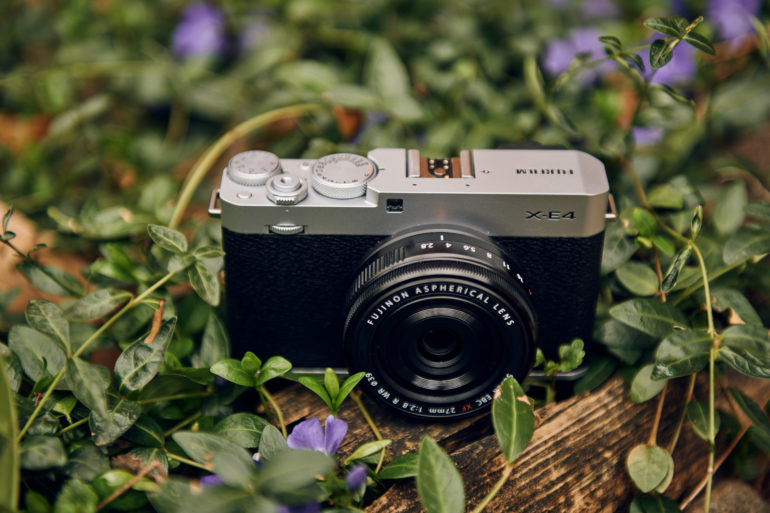
With the new pancake 27mm lens on the front, the XE4 feels almost like working with a point-and-shoot. The Fujifilm XE4 actually fit inside the pocket of my coat. I don’t recommend storing a mirrorless camera in your pocket, but Fujifilm’s pocketable claims aren’t lies (with larger jacket pockets, not jeans pockets). The body is just 1.28 inches deep and under three inches high. If you stacked three iPhones together, the iPhones would be bigger. I slung it around my neck for a three-mile hike and could almost forget it was there.
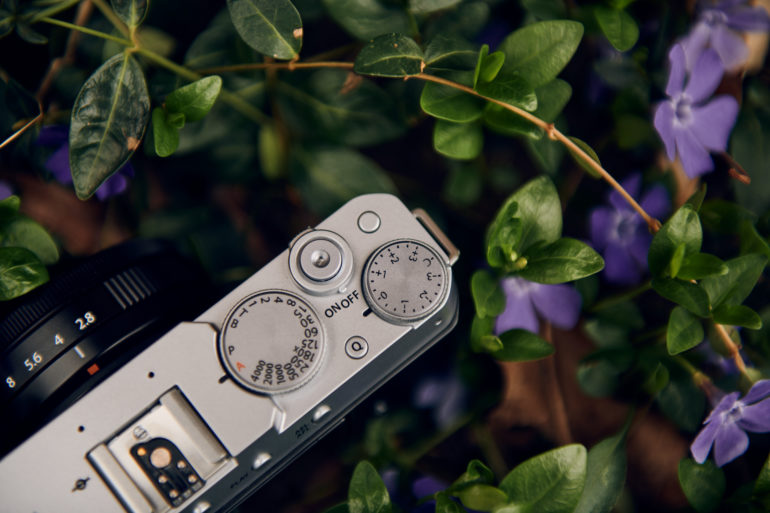
While the XE4 has the classic look of Fuji’s high-end mirrorless cameras, it doesn’t house all the same controls. The ISO dial is missing (you get an unlabeled button at the top that brings up the ISO controls on the screen). The top also houses an exposure compensation dial, shutter speed dial, a quick menu shortcut button, the hot shoe slot, and, of course, the shutter release with an on-off switch.
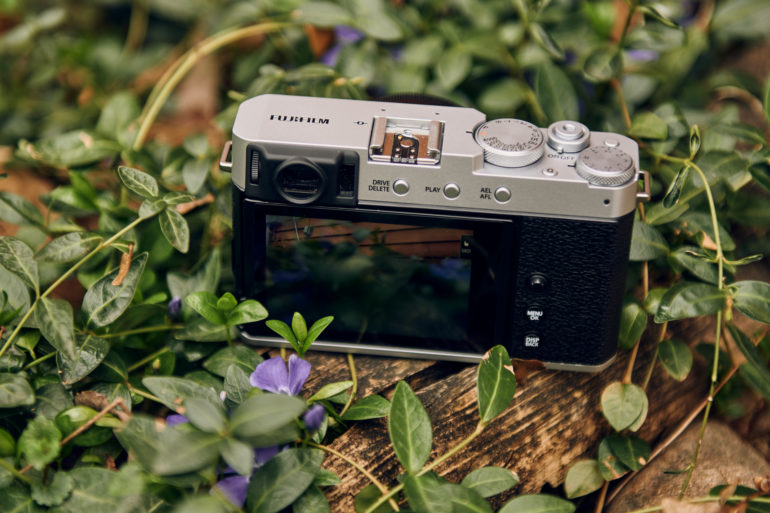
The back of the camera also feels very minimal. There are no arrow buttons to navigate the menu with. Instead, you get a little joystick. I didn’t miss the menu buttons; the joystick is faster and works well to select the autofocus point. The rear of the camera also houses playback controls, menu options, and an autofocus and auto exposure lock. Unlike the X-E3, there’s no second dial at the back.
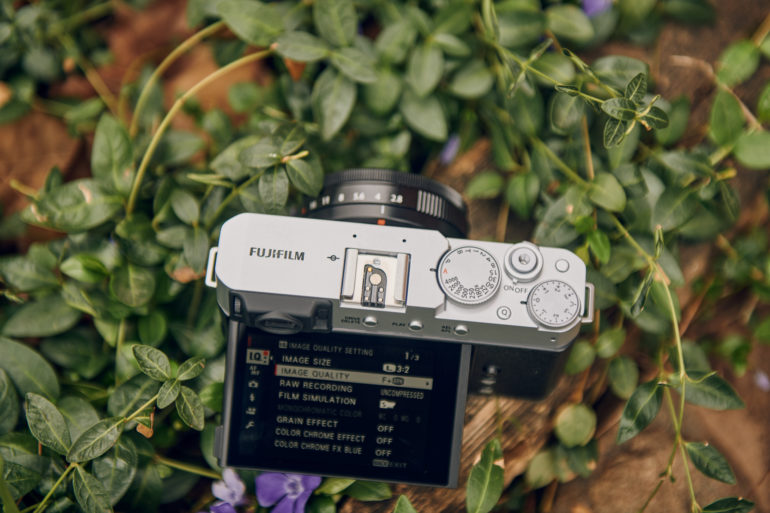
The three-inch touchscreen tilts using a hinge system. Of course, the XE series’s hallmark is that rangefinder-style viewfinder situated in the upper left corner, so you can keep one eye on the scene and the other looking at your shot. While the nostalgia is great, the .39 inch viewfinder sits flush with the camera body. That made it a little difficult to use with glasses. I prefer viewfinders with eyecups that extend from the camera body, like on the XT4. The refresh rate is also low — the viewfinder appears to stutter occasionally when panning.
On the left side are an HDMI, USB-C, and mic/remote port. The included charger is the annoying type that plugs directly into the camera here instead of removing the battery.
The front houses only a control wheel up by the index finger. Both the battery and SD card are housed in the same compartment on the bottom, which is blocked if you use a tripod quick release plate.
Build Quality
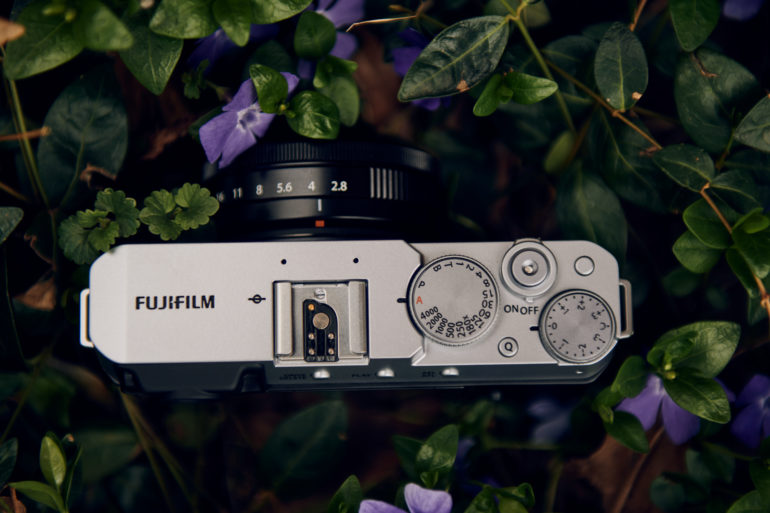
I’ve always loved the atheistic of Fujifilm’s digital cameras, and despite the price, the XE4 doesn’t disappoint. The silver top is made from magnesium alloy, and it has that classic-looking leather-like wrap. Even the shutter sound brings back thoughts of old film cameras. The controls feel sturdy and have a satisfying click. The hinge style fold on the LCD screen reminds me of the ones on much more expensive cameras. The screen will still flip all the way forward. The XE4 certainly doesn’t look like a budget camera.
But, of course, the XE4 is a budget camera. There’s no weather sealing. Ironically, the 27mm lens paired with it in the kit is weather sealed. While it feels pretty good in the hands, Fujifilm isn’t making any promises that it will keep shooting in rain or dust. If you want more than good looks, you’ll want to save enough cash to pick up the XT4.
Autofocus

The XE4 autofocus did fine with the movement of documentary-style photography and also worked well in low light. But, it’s not a sports camera (few budget cameras are).
I could get almost all keepers using single point or zone autofocus with predictable movement at a walking pace. Few images in this scenario were soft. The camera will do well with the types of motion that portrait, lifestyle, and documentary photographers typically face.
But the XE4 is not a sports camera. The tracking mode had trouble with erratic subjects coming towards me. In these situations, it captured more soft shots than sharp ones. Photographing predictable action — running from one point to another — was a little better. However, I still had about half the burst shots come out soft. Shots with slower movement, at a walking pace, however, had a great hit rate with very few soft shots.
Face and eye AF is available and did a decent job with stationary portraits. Hitting moving subjects was a little inconsistent. I had one burst that found the face every time, but another that only detected the face in half the shots. I would see the little focus box move from the face to the top of the screen as I shot, knowing I wouldn’t be getting much in focus.
In low light, the autofocus fared much better. The XE4 seemed to lock onto subjects indoors with ease. Occasionally, the XE4 took a little longer to grab focus in limited light, but overall it could lock on with limited available light.
While I wouldn’t recommend the XE4 for action, few budget cameras can keep pace with the most demanding subjects. For that reason, the lack of sports capabilities isn’t going to keep me from recommending the camera to non-sports photographers.
Ease of Use
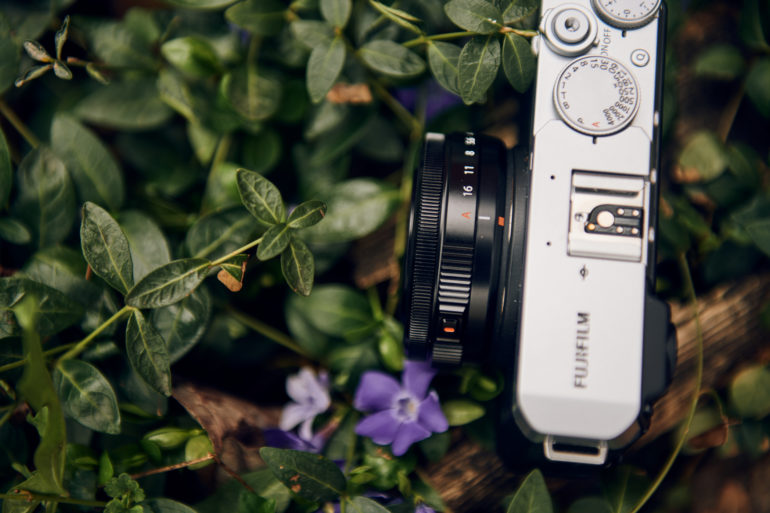
The Fujifilm XE4 sits at a bit of an odd spot — there are many controls for a beginner, but not enough for more serious users. To shoot on auto mode, you need to have the shutter dial to A, the aperture ring on the lens turned to A, and the ISO set to auto. That’s a lot of dials to remember when other cameras just have a nice green A or camera icon at the top. That’s not to say that beginners can’t use this camera, but the un-tech-savvy may be intimated by the process.
But, Fujifilm has also added a mode that ignores the setting on the aperture ring: P or programmed auto mode, which doesn’t replace the auto mode but exists alongside it. In P mode, the camera picks pairs of shutter speeds and apertures, and you can adjust them together with the front dial. You’ll still need to set the ISO (or use auto ISO), but P mode is a nice step up to manual modes that’s finally available on Fujifilm’s more affordable cameras.
The Fujifilm XE4 isn’t as simple to use as a camera with a mode dial. But, as photographers learn exposure basics, the labeled shutter speed dial, aperture ring (on the lens), and exposure compensation dial make it easier to remember which control adjusts each setting, compared to cameras that have unlabeled dials.
Besides the lack of an ISO dial, I found myself digging into the menu several times for features that other cameras have shortcuts for. The quick menu doesn’t house the AF area mode options. You have to go into the full menu to switch from a single point to zone autofocus.
Metering
Metering tests on the XE4 were right in line with expectations. Using the Sunny 16 rule, the camera’s meter read just a touch off 0 when I filled the frame with a neutral tone (green grass). As expected, the meter shot up when directed to the sky and down when pointed at the shadows.
Image quality
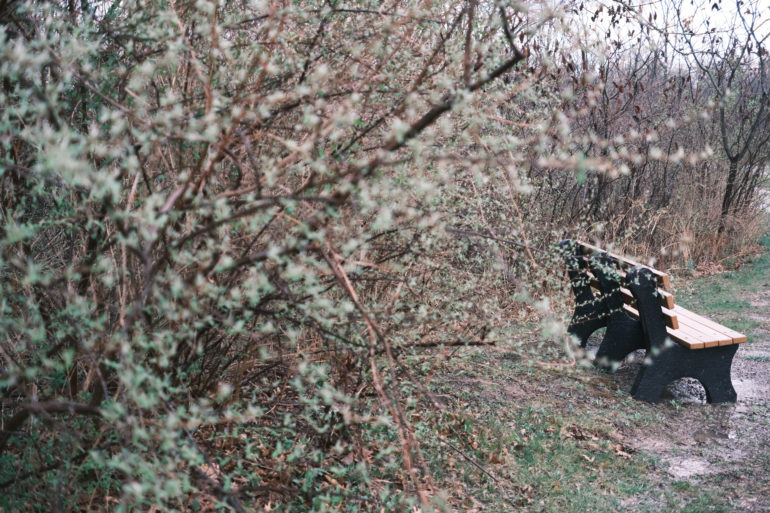
With the same sensor and processor as the XT4, I couldn’t tell the images I shot with the XE4 came from an affordable camera. With the 27mm kit lens, the camera captured some stunning soft bokeh. Subjects were sharp but not overly so.
I’ve always loved Fujifilm colors, and the XE4 didn’t disappoint here either. Color in the JPEG was great right out of the camera, and I could swap film simulation profiles when I wanted more accuracy, softer tones, or black and white. The film simulation, together with the look and feel of the brand’s cameras, is one of the main reasons to consider buying a Fujifilm.
The only giveaway that these images didn’t come from a high-end Fuji was the lack of image stabilization. I had a few more shots ruined with motion blur than I would have with a stabilized body.
High ISO Images
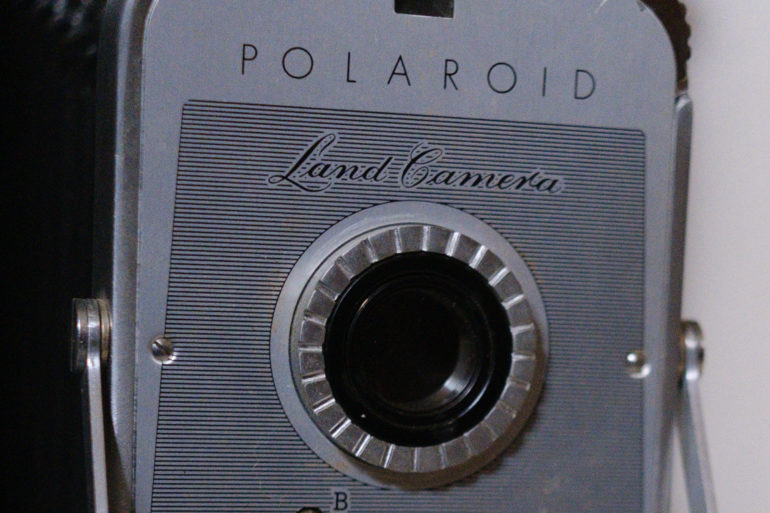
Noise reduction is solid, considering the XE4 is a crop sensor, budget camera. The shadows start to look a little noisy at ISO 1600. Color noise is well-controlled but starts creeping in at ISO 3200. I would use this camera up to ISO 6400 with a bit of noise reduction in post, more if you’re going after that grainy film look anyway, less if you’re a pixel peeper.
RAW File Versatility
On a silhouette, I manipulated the blacks to bring back a slight amount of color in the RAW file. I could also easily grab some color back in overexposed areas. But, of course, white hot spots stayed white, as is the norm. Take a look at how much was recovered in this shot:
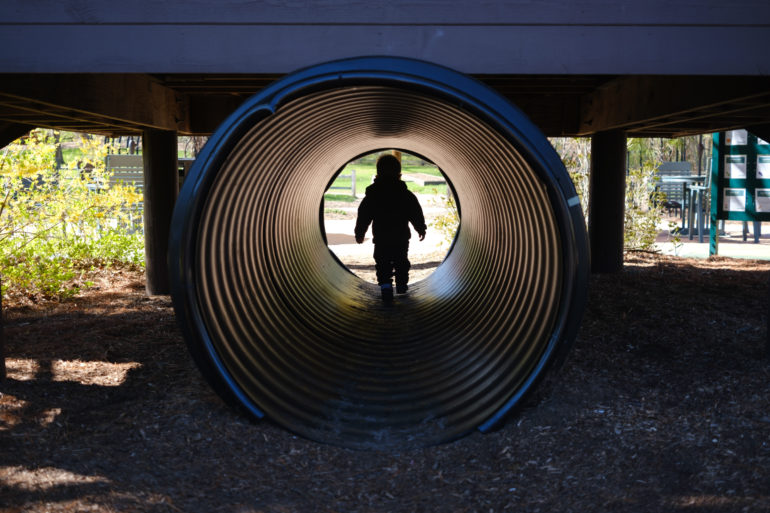

Extra Image Samples
From day one, The Phoblographer has been huge on transparency with our audience. Nothing from this review is sponsored. Further, lots of folks will post reviews and show lots of editing in the photos. The problem then becomes that anyone and everyone can do the same thing, which doesn’t show what the lens can do. So we have a whole section in our Extra Image Samples area to show edited and unedited photos. From this, you can make a decision for yourself.
Edited




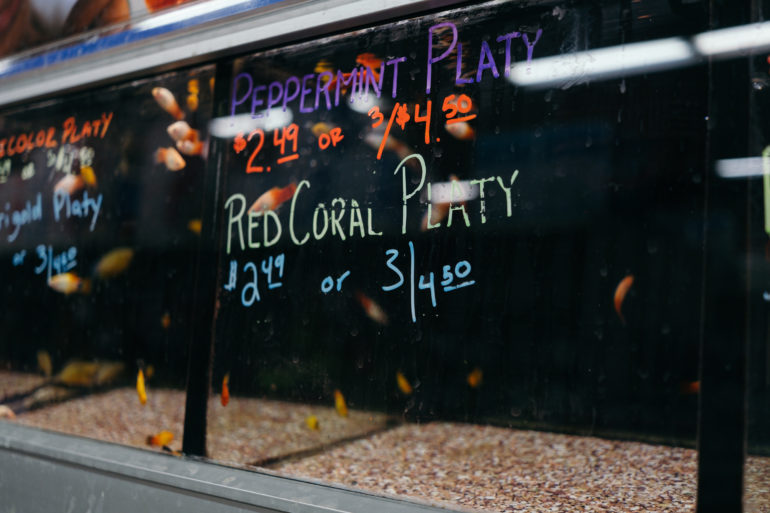


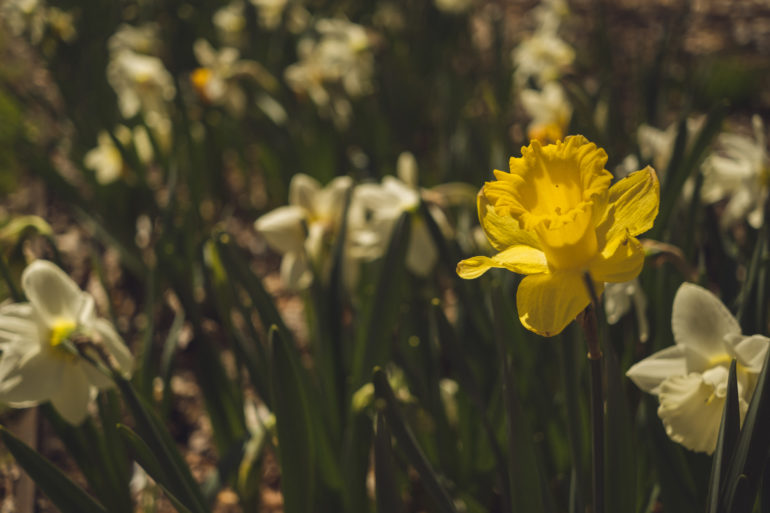
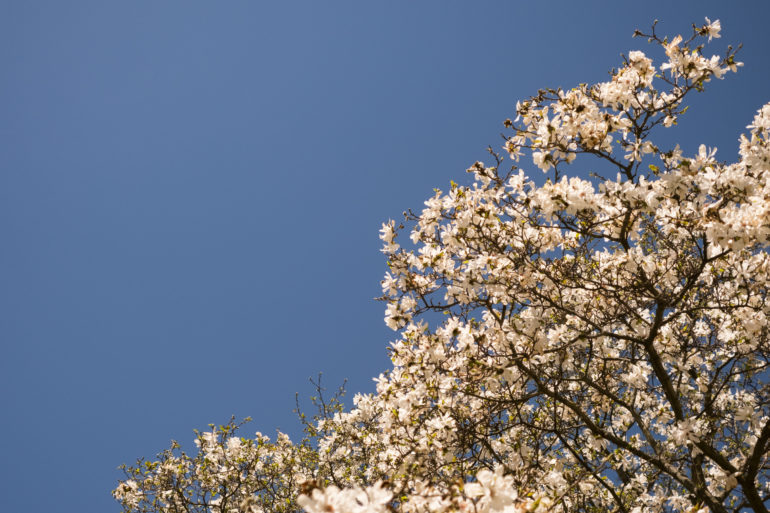
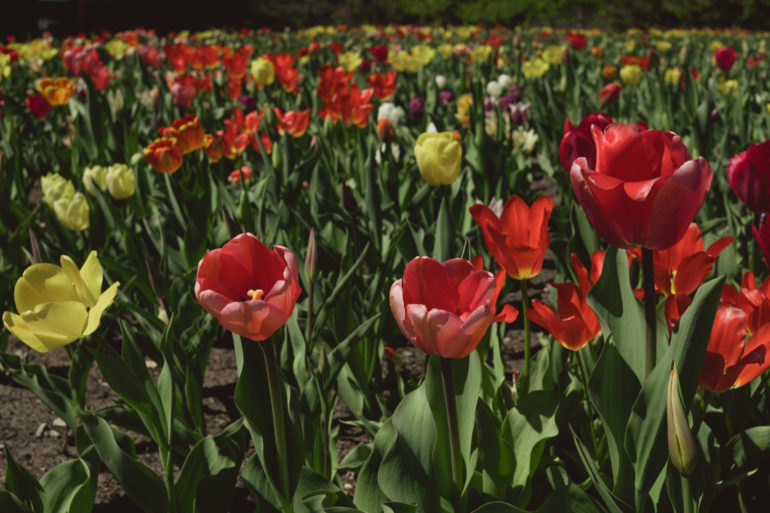
Unedited
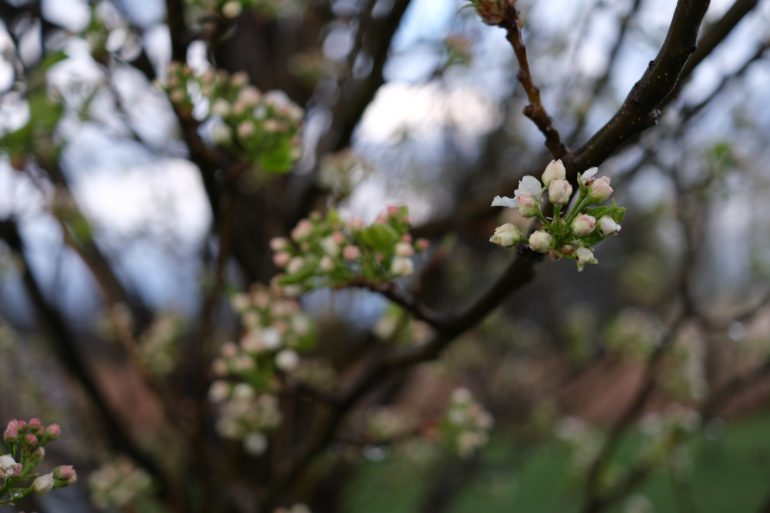
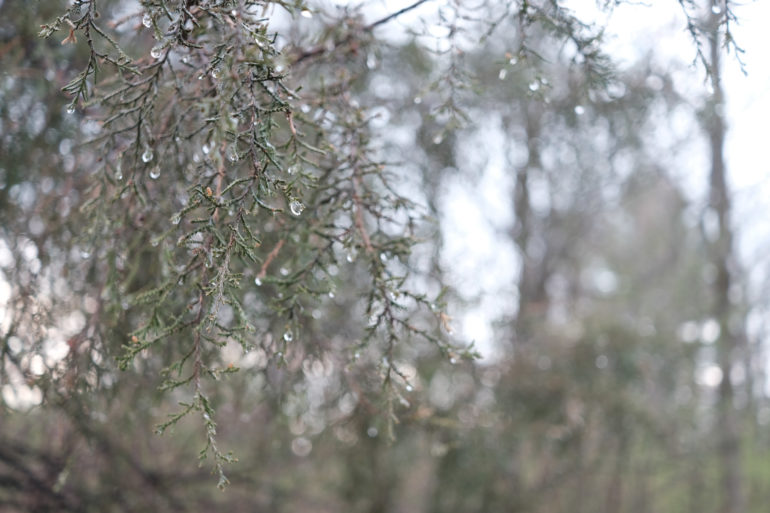
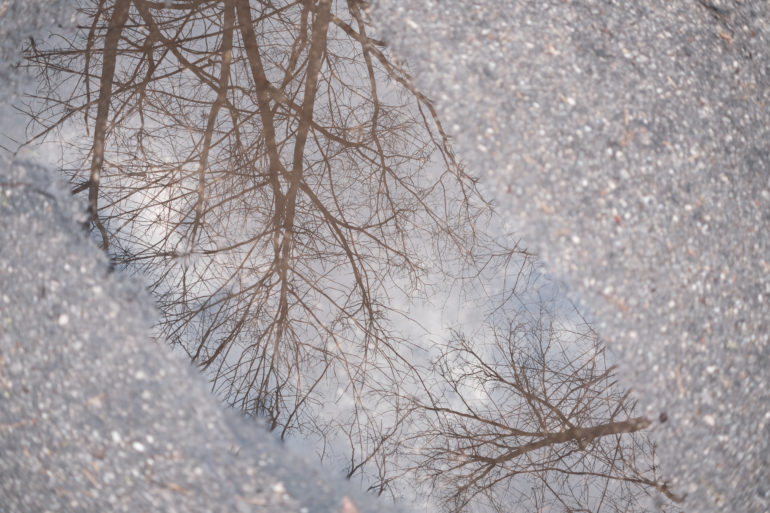
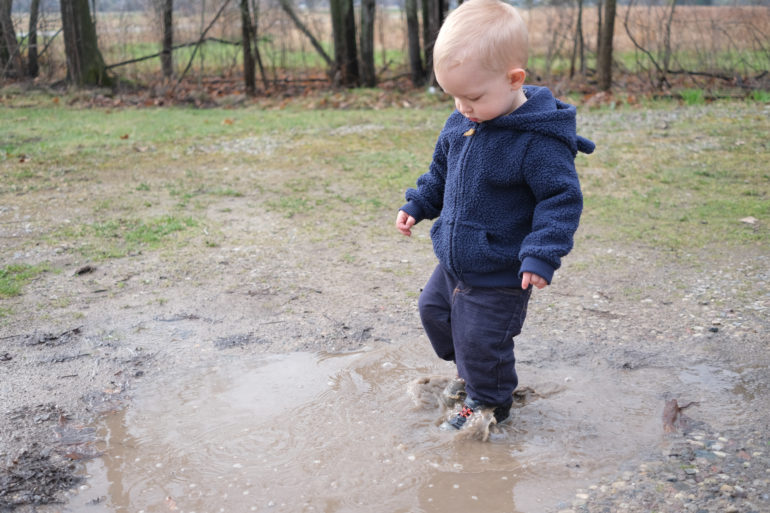






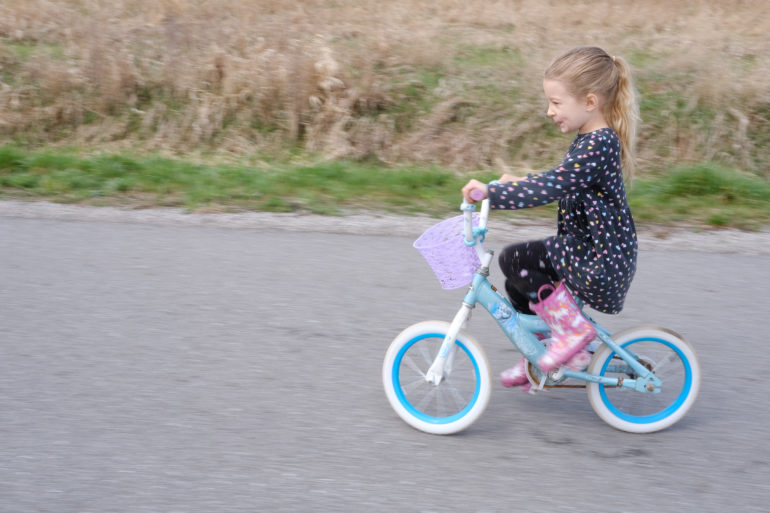
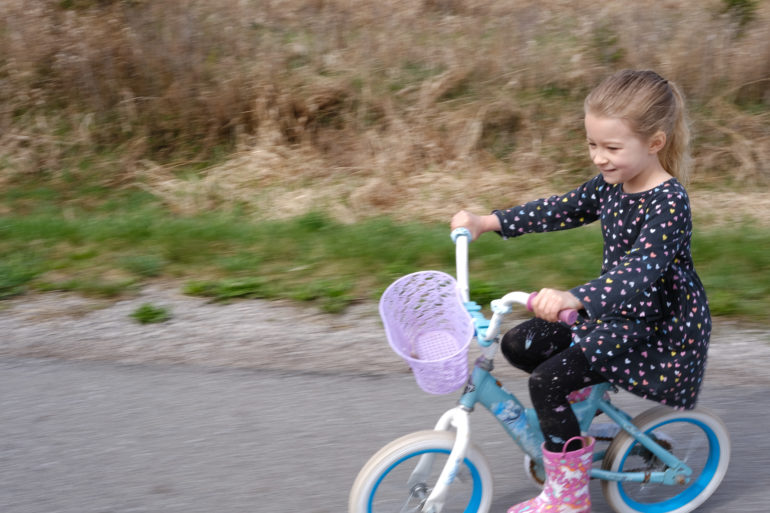
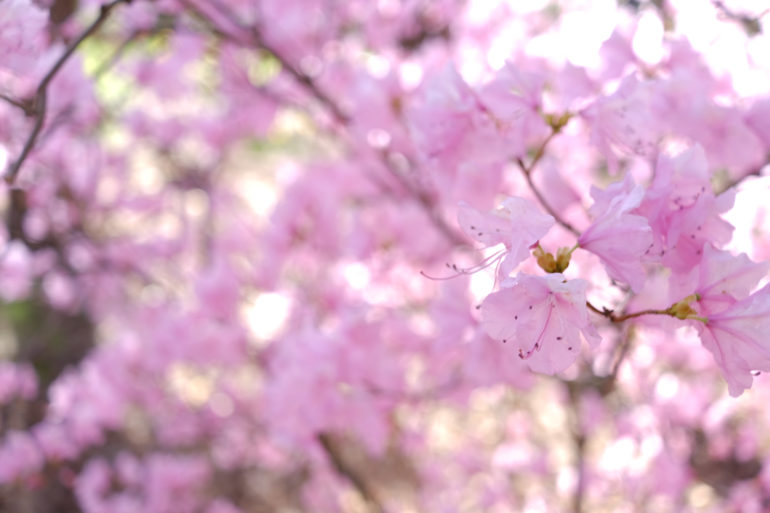

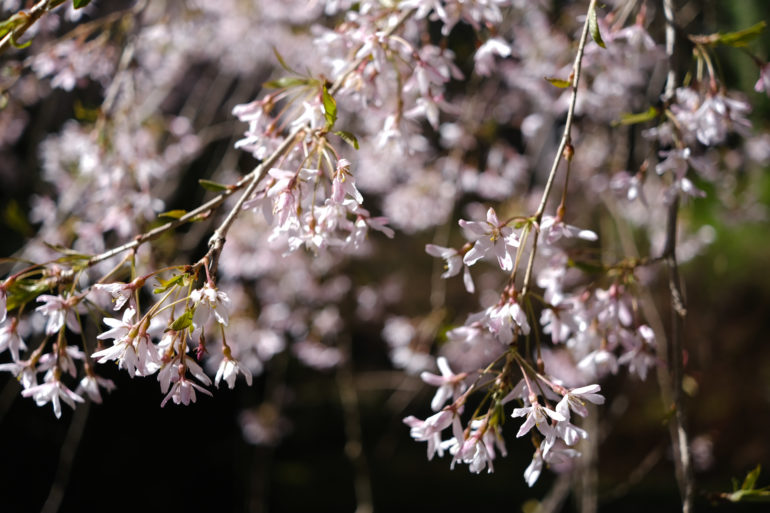
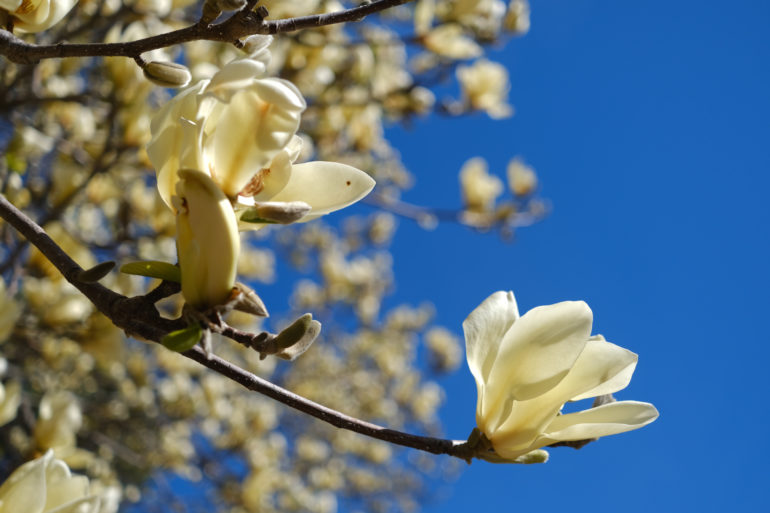
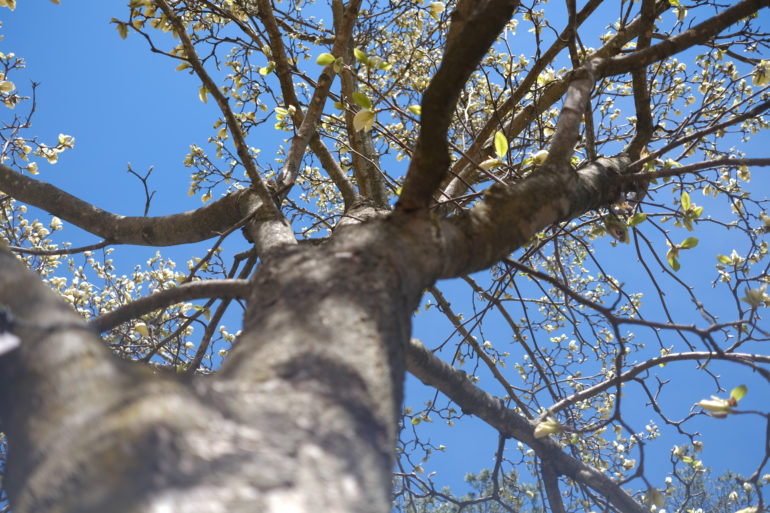

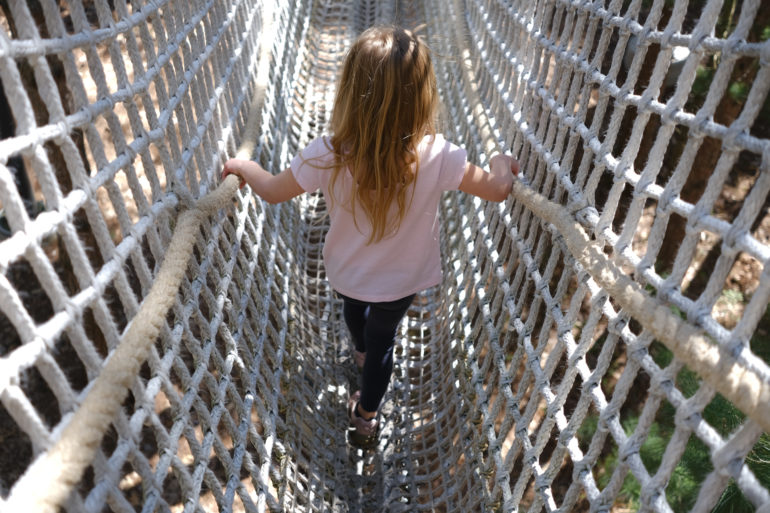
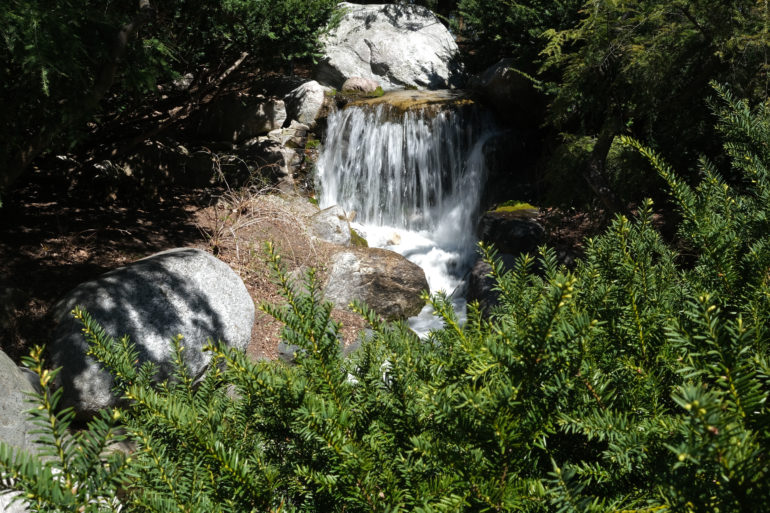

Conclusion
Likes
- I love that you can get the same sensor and processor as the XT4 for half the price. The image quality is great.
- The body and kit lens is so small it almost feels like you’re only packing a point-and-shoot.
- The XE4 has a great classic look and feel, including a rangefinder design.
- The P mode, which is common from other brands but new to this line, is a good stepping stone for new photographers learning manual mode.
Dislikes
- The lack of image stabilization becomes obvious in low light.
- There’s no ISO dial, and some more commonly used settings are buried in the menu.
- There’s no weather-sealing.
- The viewfinder is not ideal for those who wear glasses.
- Autofocus had a hard time in tracking mode and working with erratic motion.
The XE4 isn’t Fujifilm’s best camera — but it is compact and shoots great photos for the price point. The image quality is on par with cameras that cost twice as much. It maintains the excellent color and noise reduction of pricier cameras, as well as Fujifilm’s film color profiles.
What’s missing to get to the XE4’s price point is performance and some of the ergonomics. It isn’t a sports camera, and it also lacks image stabilization. Weather-sealing and an ISO dial are also absent. While many will like the rangefinder design, others will prefer a viewfinder that sits away from the camera body.
If you want great photos with great color and bokeh and only have about a grand to spend, the XE4 with the 27mm kit lens is a good choice. If you need weather-sealing, wear glasses, or photograph running subjects, keep looking.

I’m giving the Fujifilm XE4 four out of five stars. Want one? Check out the Fujifilm Store on Amazon for various configurations.


